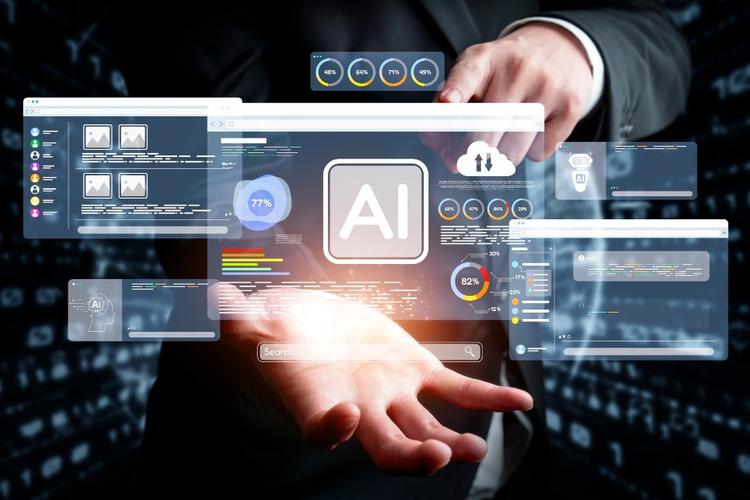Samesurf Visual AI Drives High-Fidelity Interactions in Agentic AI Workflows
October 21, 2025

Samesurf is the inventor of modern co-browsing and a pioneer in the development of core systems for Agentic AI.
Modern organizations are increasingly relying on agentic AI to handle complex tasks autonomously, from goal-setting and planning to execution. Agentic systems extend beyond basic content generation to deliver sophisticated workflow optimization and operational autonomy. With adoption accelerating and enterprise budgets for agentic AI expanding, measurable productivity gains are becoming evident. Successful scaling, particularly in customer-facing and high-stakes roles, faces a major constraint known as the context gap. When agents rely only on text inputs or low-fidelity visual representations such as static images, they lack the continuous, high-resolution visual context required for precise decision-making, secure execution, and effective Human-in-the-Loop oversight. Such limitations increase operational risk and reduce performance in complex digital environments. Samesurf’s patented Cloud Browser infrastructure exemplifies a visual-first architecture that directly addresses this challenge. Serving as a secure, compliant foundation, the Samesurf platform bridges the context gap and allows agentic AI to operate safely and effectively in regulated environments such as finance and healthcare.
Advancing Agentic AI with Visual Perception
Agentic AI marks a fundamental evolution beyond traditional generative AI. While generative models focus on passive content creation, agentic systems enable autonomous decision-making and consequential action. These agents can set goals, reason through solutions, plan complex sequences, and execute tasks with minimal human oversight. Their architecture relies on a continuous feedback loop built on four pillars: Perception, where the agent gathers information from a dynamic environment; Reasoning, in which a Large Language Model analyzes data and generates potential solutions; Planning, which translates high-level objectives into actionable sub-tasks; and Action, where the plan is executed via integrated tools or APIs.
Perception as the Foundation of Intelligence
Accurate environmental perception is essential for reliable autonomy. Just as human decision-making depends on sight, AI enabled agents require robust sensory input to act effectively. Systems limited to internal logic or predefined rules, without real-time perception, cannot adapt to dynamic conditions and are unable to handle complex organizational workflows.
Industry trends indicate a strategic shift toward multimodal interfaces that combine voice, text, and visual inputs to create a natural, conversational experience. Vision Language Models are enabling visual AI agents with broad perception and contextual understanding. Traditional text-based assistants place the burden of context establishment on users. For example, when a user encounters a web error, they must describe the issue or upload a screenshot manually. Real-time visual perception allows the agent to analyze the visible content directly, thereby providing proactive guidance and reducing friction in operational and customer-facing scenarios.
Perception Quality and Operational Risk
The fidelity of visual perception directly affects the reliability of agent actions. Low-quality or delayed perceptual data leads to flawed reasoning, incorrect planning, and potentially severe operational errors in high-stakes environments such as financial services, insurance, or healthcare. High-resolution visual input is therefore not just a productivity feature but a critical mechanism for mitigating operational and regulatory risk.
By enabling real-time screen visibility, Visual-First AI shifts context responsibility from the user to the agent. Support and sales interactions move from reactive troubleshooting to proactive collaboration. The agent can detect points of user struggle, such as hesitation in form filling or visual error messages, and provide precise guidance or automated correction. This approach transforms the customer experience into a seamless, high-touch journey while reducing operational risk and improving efficiency.
The Importance of Real-Time Visual Context with Agentic AI
Autonomous agents require environmental context that extends far beyond static visual inputs. Many enterprise systems, especially in regulated sectors like finance, rely on dynamic dashboards, constantly updating metrics, and interactive web elements. Screenshots capture only a single moment and fail to convey the sequence of interactions or the layout of the digital environment. Low-fidelity visual inputs make multi-step task execution unreliable and increase operational risk.
Automation that relies solely on the Document Object Model can be brittle, particularly with older or highly customized systems. Agents need high-fidelity perception, including complex layout extraction that captures document intricacies beyond basic Optical Character Recognition and visual grounding to identify the precise location of text and elements. Standard visual proxies cannot provide this level of precision.
Real-Time Context for LLM Reasoning and Planning
High-fidelity, continuously updated visual input provides essential grounding for an agent’s LLM, improving reasoning accuracy and safety. Real-time context allows the model to align with business rules and ethical norms while reducing the risk of errors, hallucinations, or unintended actions in sensitive workflows.
Complex, multi-step tasks require the agent to maintain a compressed knowledge base and progress autonomously without continuous human input. High-fidelity context enables efficient filtering of relevant information and discarding of redundant or noisy data, ensuring reliable planning and execution. Immediate access to visual context also allows agents to intervene at the exact moment a customer encounters an error or hesitation, providing automated assistance or triggering human oversight seamlessly.
Decoupling Context from User Devices
Legacy collaboration tools, such as screen sharing or client-side co-browsing, depend on the user’s device, network conditions, and software setup. This introduces delays, inconsistencies, and security risks. Hosting the interaction in a secure, centralized Cloud Browser ensures predictable, standardized visual inputs independent of the user’s local environment. Centralized execution delivers consistent, high-fidelity context, which is essential for accurate reasoning, planning, and task execution.
High-Fidelity Context as the Foundation for Multi-Agent Collaboration
Future Agentic AI deployments will rely on multiple specialized agents working together to solve complex tasks. Reliable collaboration requires shared, synchronous knowledge. Low-fidelity or delayed visual input prevents agents from coordinating handoffs, synchronizing actions, and verifying that they are operating on the same application state. High-fidelity, real-time visual context provided by a cloud-based platform is critical for scaling multi-agent workflows safely and efficiently in mission-critical environments.
Samesurf Cloud Browser Architecture for Visual Autonomy
Samesurf’s Agentic AI platform delivers a patented architecture designed to provide the high-fidelity, real-time visual context that autonomous systems require.
Install-Free, Code-Free, and Secure Architecture
Enterprise deployments often encounter friction due to complex installation and IT modification requirements. Samesurf solves this by offering an install-free and code-free collaboration platform, eliminating security risks and performance issues associated with client-side software or third-party code placement.
The platform evolves traditional client-side co-browsing into a robust server-driven model. Centralized control and enhanced security are achieved through the cloud browser and encoder, which mediate all interactions within a proprietary, secure infrastructure.
Cloud Browser: A Consistent and Replicable Visual Environment
Samesurf’s Cloud Browser operates entirely on the server side, creating a centralized, controlled, and replicable environment essential for agent deployment.
Isolation ensures predictable operation, independent of the end-user’s device state. Predictable environments are critical for agents to reason effectively and accomplish complex goals. Foundational patents protect the role and operation of cloud browsers in synchronized browsing and Agentic AI, confirming Samesurf’s leadership in this space.
Patented Simulated Browsing for Complex Multi-Step Tasks
AI enabled agents must execute actions that mirror human behavior. Samesurf patents enable agents to simulate browsing across web pages, mobile apps, and documents from any platform or device.
Simulated browsing allows agents to navigate intricate applications, complete dynamic forms, and interact with diverse web elements, tasks previously restricted to humans. Built-in visual oversight lets human operators monitor the agent’s execution path in real time, providing high-fidelity context for verification and error diagnosis during multi-step processes.
Compliance and Governance as Strategic Advantages
Enterprise adoption of Agentic AI is constrained by regulatory requirements such as HIPAA and PCI-DSS. Legacy screen-sharing and client-side co-browsing struggle with securing sensitive data and maintaining compliance. Samesurf embeds security and governance directly into the cloud browser. Patented features such as in-page human-in-the-loop control and ML-enabled redaction transform compliance from a barrier into a strategic enabler, lowering the hurdles for deploying autonomous agents in regulated sectors.
Advantages Over Legacy Collaboration Tools
Traditional screen sharing exposes entire desktops, creating privacy risks and requiring downloads. Older co-browsing methods often rely on third-party code injection and fail under complex web applications. The Samesurf Cloud Browser secures high-fidelity, synchronous interaction, handles complex dynamic content efficiently, and supports reliable collaboration between human operators and agents. This architectural distinction provides a primary strategic advantage for enterprises deploying scalable, governed Agentic AI.
Agent-Assisted Interaction and the Human-in-the-Loop Mandate
Deploying highly autonomous systems in enterprise environments requires robust governance, achieved through Human-in-the-Loop oversight. Effective HITL demands precise visual context and the ability to transfer control seamlessly between humans and agents.
Orchestrating the Hybrid Workforce
Enterprises increasingly rely on HITL models, especially for agents handling high-stakes tasks. Human oversight mitigates risks such as AI hallucinations, bias, or failures in edge cases outside the training data. Human workers transition from executing tasks to supervising and validating agent actions, requiring a secure, integrated platform that bridges expertise with automated execution.
The AI agent fulfills two complementary roles. It executes tasks autonomously, such as navigating portals or completing forms, while simultaneously supporting human operators by analyzing shared screens, suggesting knowledge base articles, or automating routine administrative work. High-fidelity visual context enables the agent to perform autonomous execution and proactive human guidance concurrently.
Surgical Intervention with In-Page Control Passing
Accurate and secure transfer of control is critical when human intervention is needed. Traditional systems often require full desktop or application takeover, creating security risks and disrupting workflow continuity.
Samesurf’s patented In-Page Control Passing allows human operators to intervene precisely within the same web page without relinquishing device control. Monitors can correct logical errors or execution anomalies in real time using shared visual context and immediately return control to the agent. This capability preserves workflow momentum and establishes a verifiable trust layer, lowering operational risk in enterprise deployments.
Multi-Agent Coordination with Shared Visual Context
Complex multi-agent deployments, such as multi-step claims processing or financial compliance workflows, depend on shared, synchronous environmental understanding. Coordinated action is impossible without a single, accurate representation of the application state.
Samesurf’s architecture natively supports multi-agent collaboration. Multiple entities, whether human or AI enabled devices, can interact simultaneously in multi-leader mode on the same page. The platform enables visual handoffs and coordinated actions across digital assets, ensuring all participants operate on the same high-fidelity visual context in real time.
The Trust Layer for Visual Context, Security, and Compliance
Successful deployment of Agentic AI in regulated industries depends on embedded security and compliance features that form the core of the Trust Layer. Visual-First architecture provides the real-time, high-fidelity context necessary to enforce these safeguards.
Context Isolation for Agentic Security
Agentic AI introduces security risks that traditional models cannot address, including unauthorized privilege escalation when agents switch contexts to perform tasks with service accounts.
Samesurf manages all interactions through a controlled, server-side Cloud Browser. This centralized execution isolates browsing activity from the end-user device, ensuring that security context shifts between the agent, the human monitor, and the user remain fully controlled. Architectural isolation mitigates risk by preventing unauthorized access, data exposure, or privilege misuse during any stage of agent execution or control handoff.
Automated Element Redaction for Compliance
Protecting sensitive customer data, including PII, PHI, and payment information, is a regulatory requirement under GDPR, HIPAA, and PCI-DSS.
Samesurf’s patented Element Redaction technology automatically masks sensitive fields and pre-existing content, such as Social Security numbers, credit card details, and policy numbers, from unauthorized AI or human monitoring. This capability enables the AI agent to execute high-value tasks involving sensitive data while enforcing compliance in real time. Redaction ensures secure HITL at scale, bridging the gap between automation and regulatory obligations.
Auditability and Explainability with Session Recording
Regulatory frameworks demand immutable audit trails for high-risk processes. Samesurf provides complete session recording that captures all events and interactions in a synchronized session, establishing a trustworthy record for audit, compliance, and risk management.
The recorded visual and interaction data allows enterprises to verify actions, support post-incident analysis, and provide explainable AI evidence. Samesurf’s intellectual property covering synchronized browsing, automated redaction, and in-page control passing reinforces its technical leadership and ensures enterprise buyers that the platform’s governance mechanisms are robust, compliant, and market-tested.
Driving Business Impact with Visual-First Agentic AI
Visual-First Agentic AI delivers measurable outcomes by transforming customer service and sales into strategic growth drivers. High-fidelity, real-time visual context enables human or AI agents to provide personalized guidance during complex digital interactions. Agents can instantly launch co-browsing sessions to walk customers through policy comparisons, highlight key features, and securely assist with form completion. This approach reduces friction, increases conversion rates, and enhances customer satisfaction.
In financial advisory, secure visual collaboration replaces cumbersome phone or email exchanges, enabling real-time, data-driven portfolio reviews. Insurance agents can guide customers step-by-step through claims portals, minimizing errors, accelerating processing, and reducing stress.
Operational efficiency is also significantly improved. Visual-first interactions remove ambiguity, allowing agents to see the exact interface the customer encounters, troubleshoot issues quickly, and resolve problems in a single interaction. Critical metrics, including First Call Resolution, Average Handle Time, and Agent Experience, show measurable improvement, translating into higher service quality, greater agent retention, and stronger competitive advantage.
Recommendations for Agentic AI Adoption
Organizations seeking to capitalize on the next wave of agentic AI must adopt a phased, visually grounded strategy.
- Prioritize Complex, Visual Workflows: Initial Agentic AI deployments should focus on high-risk, multi-step tasks that involve navigation, complex form completion, or the handling of regulated data. These are the areas where the failure of low-fidelity context yields the highest operational risk and where visual grounding provides the most immediate return on accuracy and compliance.
- Mandate Governable Architecture: It is imperative to select platforms that embed security and compliance features, such as automated redaction and immutable session recording, directly into the agent’s execution environment. This guarantees accountability and safety by design.
- Embrace the Supervisory Role: Human teams must be strategically transitioned from mere transaction handlers to expert supervisors. They should be trained to leverage patented HITL capabilities for surgical intervention, real-time validation, and guiding the overall agent workflow, ensuring that human judgment remains the final arbiter in complex, high-stakes decisions.
Conclusion
The shift toward Agentic AI requires a fundamental architectural transformation in how autonomous systems perceive and interact with their environment. Evidence shows that relying on text-only or low-fidelity visual inputs introduces significant risk and operational friction, making complex, customer-facing workflows prone to errors and non-compliance. High-fidelity, real-time visual context is essential to elevate AI agents from advanced chatbots to reliable, goal-driven collaborators.
Samesurf’s patented Cloud Browser infrastructure provides this critical context through a centralized, secure, and replicable execution environment. This Visual-First architecture enables autonomous agents to simulate human browsing and execute complex tasks while creating a robust enterprise Trust Layer. Built on automated element redaction and precise Human-in-the-Loop control passing, it meets stringent governance and compliance standards, including HIPAA and PCI-DSS. Adopting this visual-first approach allows organizations to transition to a hybrid, agent-assisted model, delivering superior customer experiences, significantly improved operational performance, and a clear competitive advantage in the digital marketplace.
Visit samesurf.com to learn more or go to https://www.samesurf.com/request-demo to request a demo today.


